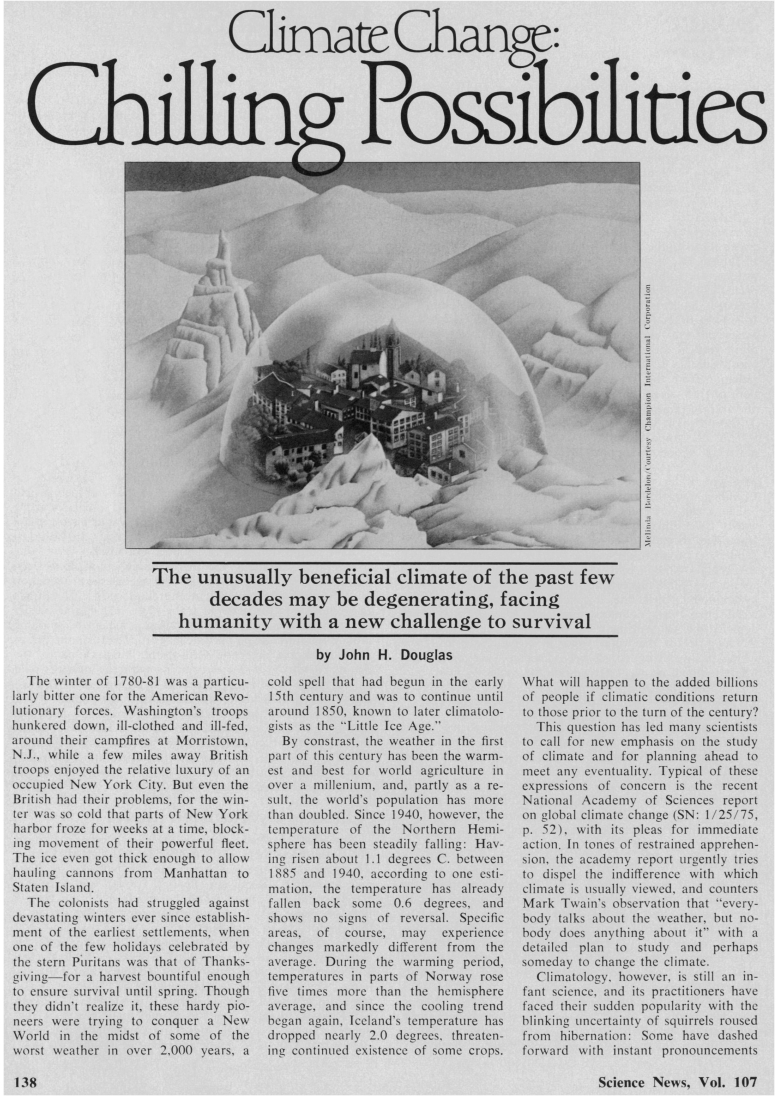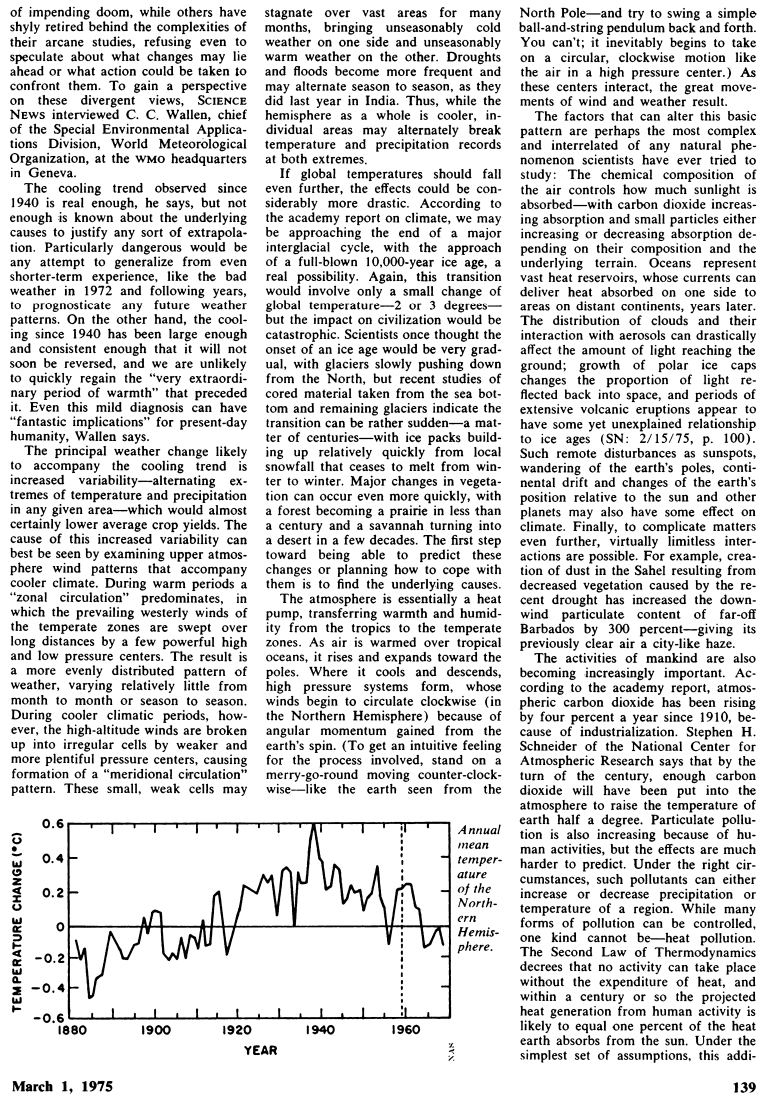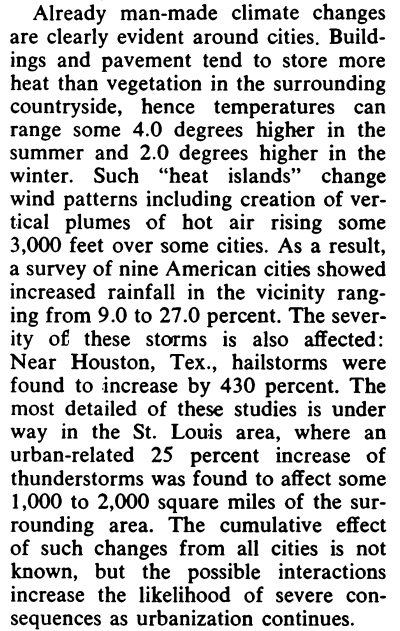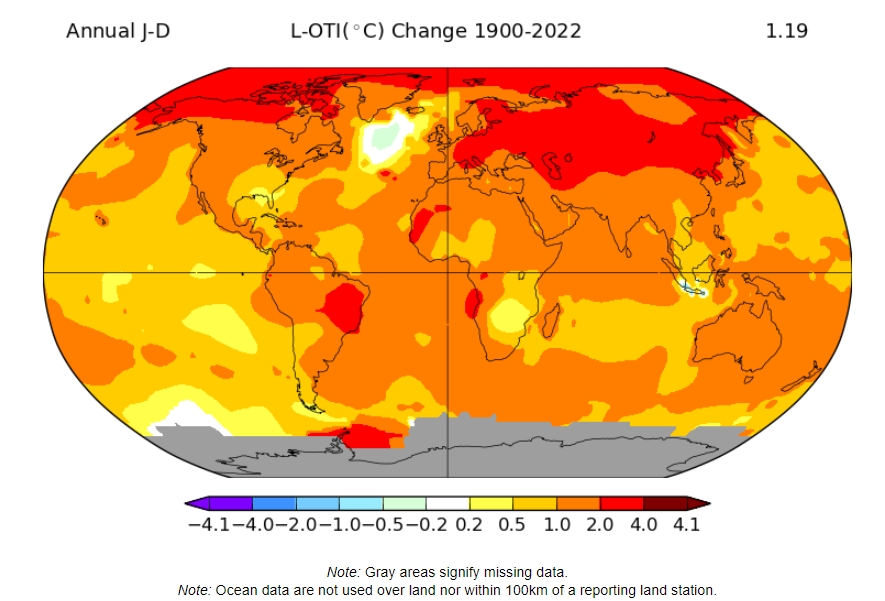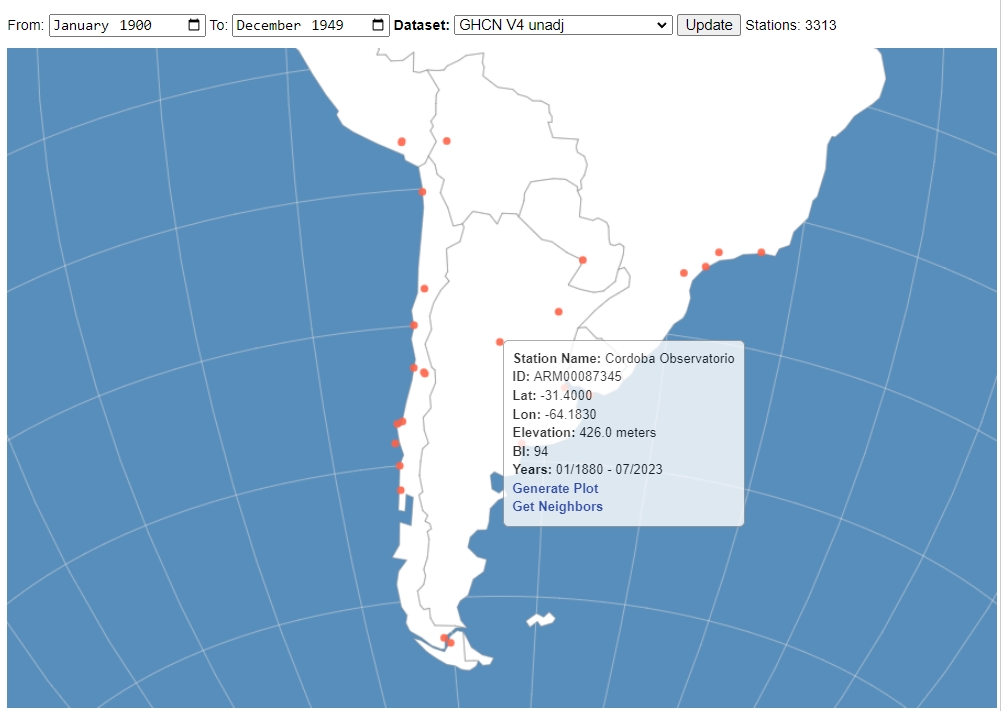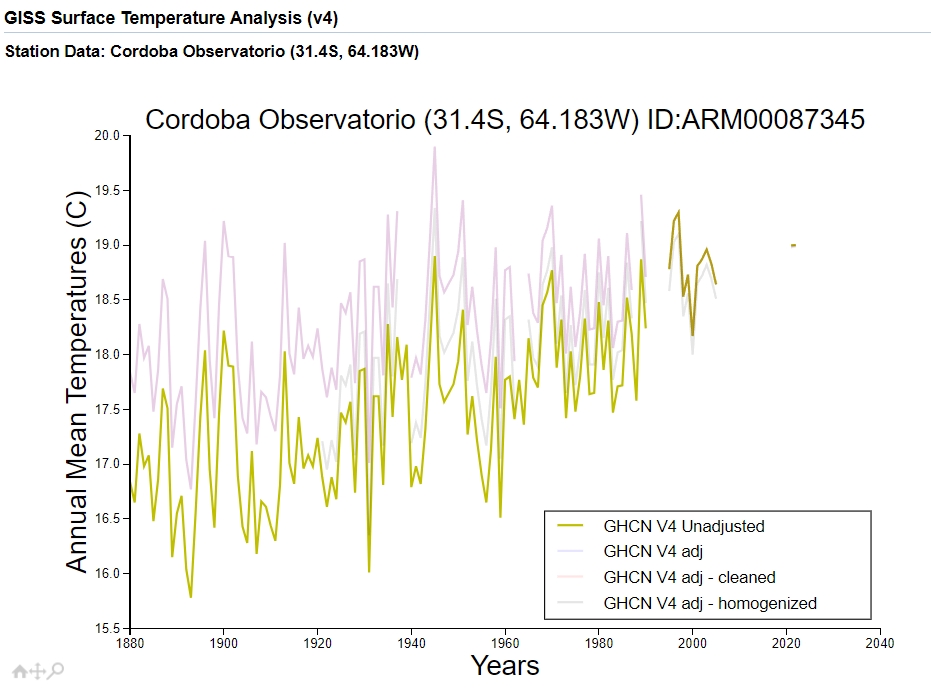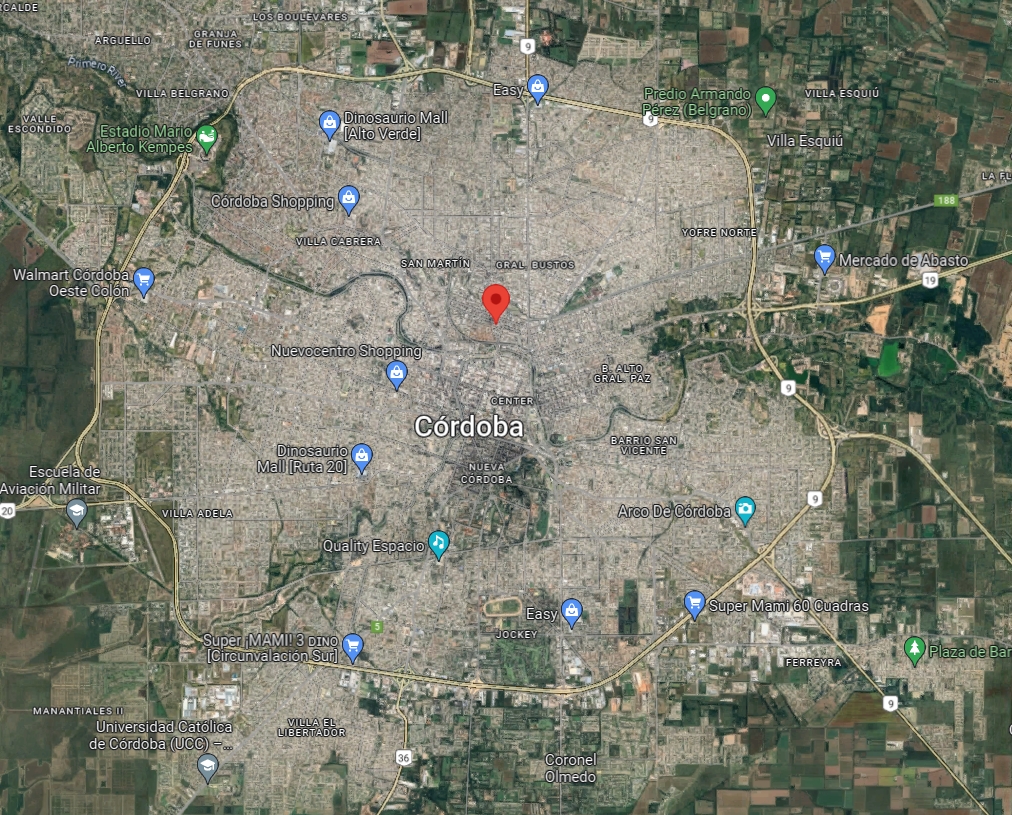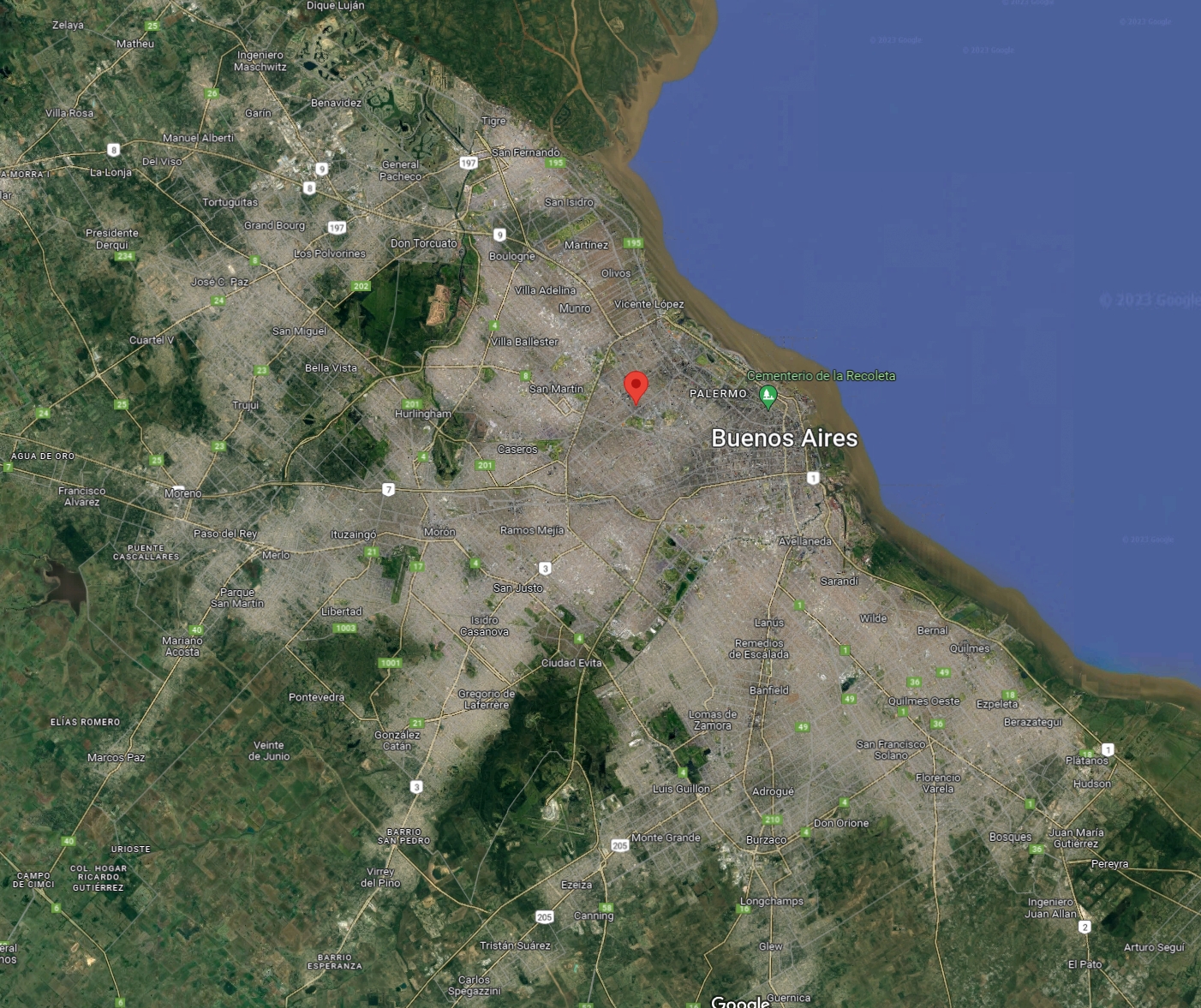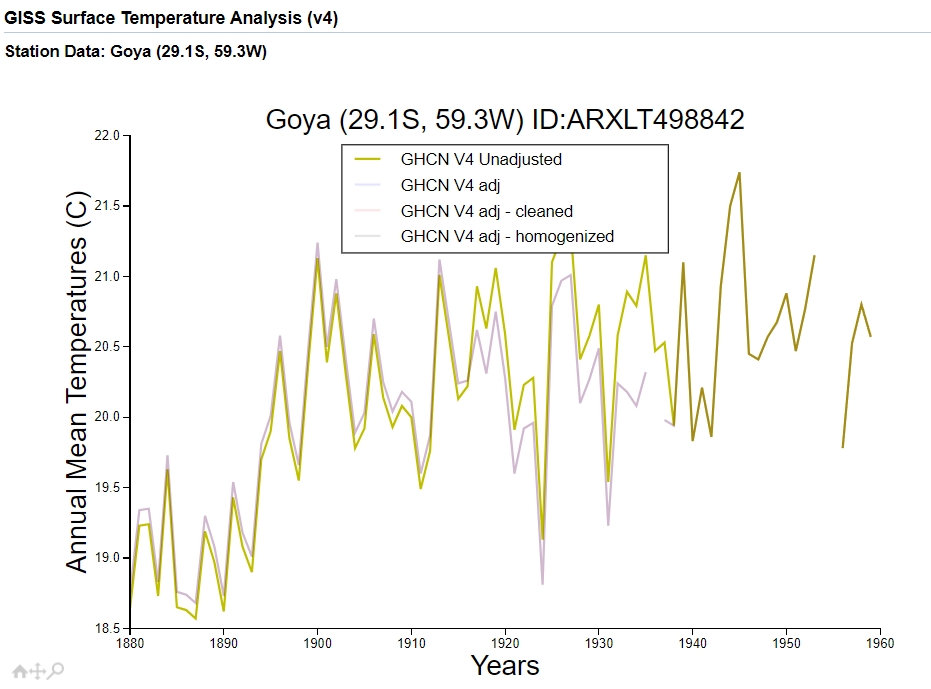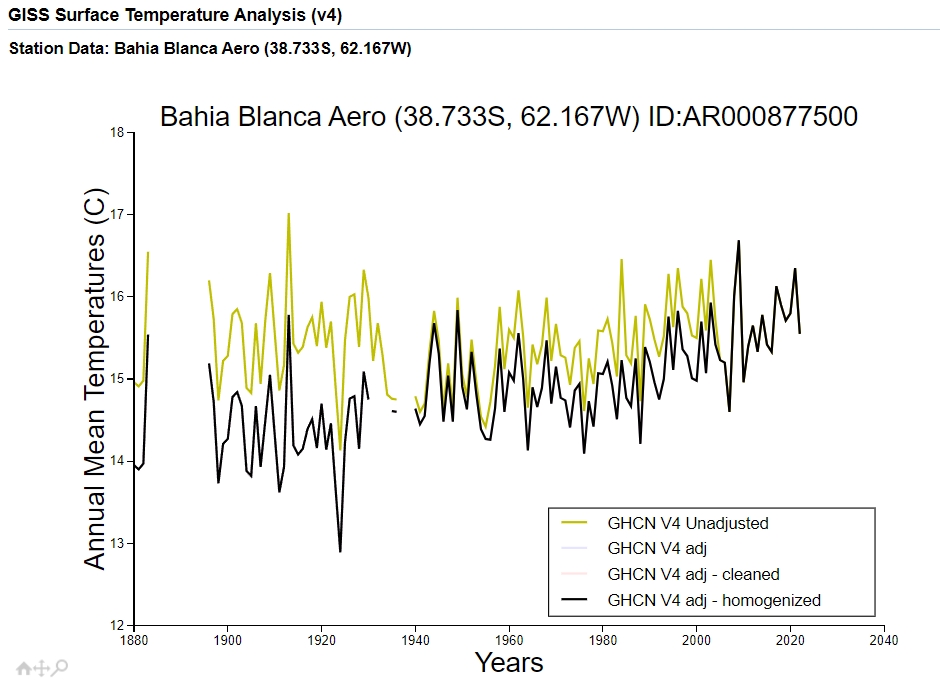In the March 1, 1975 edition of Science News they discussed how global cooling was making the climate more extreme and also discussed how the Urban Heat Island effect caused 2-4 degrees warming in cities.
 Climate Change: Chilling Possibilities | Science News
Climate Change: Chilling Possibilities | Science News
According to NASA, Argentina has warmed very rapidly since the year 1900.
Data.GISS: GISS Surface Temperature Analysis (v4): Global Maps
Argentina is more than 2,000 miles long and NASA says they have monthly temperature data at four locations during the first half of the 20th century
Data.GISS: GISS Surface Temperature Analysis (v4): Station Data
Two of those stations are near the center of very large cities, and show a lot of warming. Neither are suitable for climate analysis, because they are both severely contaminated with Urban Heat Island effects.
Data.GISS: GISS Surface Temperature Analysis (v4)
Data.GISS: GISS Surface Temperature Analysis (v4)
The third station at Goya is too short and fragmented to be of any value.
Data.GISS: GISS Surface Temperature Analysis (v4)
The only good station in NASA’s data set is at Bahia Blanca, and it shows no warming, So NASA contaminates the data with UHI affected data from other sites, and creates a non-existent warming trend for the entire country.
Data.GISS: GISS Surface Temperature Analysis (v4)
NASA created the warming in Argentina by contaminating the only station of any value (which showed no warming) with UHI contaminated data from other stations.

